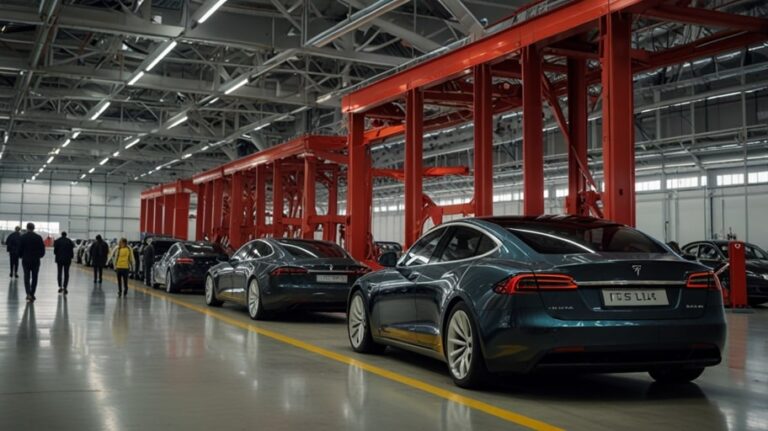“Buddy, that’s a train!” my good friend Jackie Ritchie exclaimed two summers ago as we paddled our kayaks down the Mad River during one of our countless weekly trips.
I can’t even begin to tell you how many times I’ve paddled that section of river—hundreds, maybe thousands of times—yet never had I noticed the two distinct wheels rising just a fraction of an inch above the river’s surface. I’d noticed the ripple caused by the wheels of the upside-down train car before and had always deliberately avoided paddling near them because I mistook them for being yet another logjam or submerged tree root or something else that would snag my boat and tip me over.
It was a gloriously hot day in July of 2014 when Jackie first laid eyes on the inverted train car submerged in the river, and the water was extremely low and crystal-clear in the late summer heat. I remember almost flipping my kayak in my haste to turn around and see this so-called “train” that she claimed to have found. For an old river salt like me, an exciting find is cause for much celebration and the source of the endless “Things I Found In the River” stories, but a train? I thought she was pulling my leg.
Sure enough, she was right—there was what appeared to be an upside-down train car in our river—or at least, a train car axle. We still can’t be sure, because what would be the top of the car is buried in the riverbed. We took pictures of the wheels gracing the river’s surface as best as we could and poked around for any other clues (finding only an old metal milk can in the wreckage) before paddling on home and excitedly declaring to our friends that we’d made the most incredible river discovery of our lives.
We took our friends out again the very next day to show them “our train” as we’d taken to calling it, and as we did so, we spotted yet another upside-down axle in the same position, only about 20 feet upstream of the first car.
Desperate to know where these things came from, I spent many of my weekends during the winter of 2014 in downtown Springfield working with Natalie Fritz at the Heritage Center, searching fruitlessly for any article or mention of a train derailment west of the Bass Lake trestle in Mad River. Fritz was just as baffled as I was, as she produced article after article on train derailments in Springfield near the river, but none matched the time period or correct area. Discouraged by not finding anything on our discovery, I didn’t give up on identifying our train altogether, but my search for facts became less-engaged as time went by.
Last week, as local historian Dave McWhorter stopped by our office to chat, it dawned on me that I should ask him to help solve the riddle of the train. This is a man who knows how to find things—historical things in particular—and he didn’t disappoint, as he sent me a message that same evening containing photos of an old newspaper article from August of 1920 that described a “traction line derailment,” not a train wreck as I’d originally assumed.
McWhorter had gone straight home to call Bethel Township history expert Scott Suther and ask about my query, and coincidentally enough, Suther had just looked at that article two days before as he prepared for his lecture on the old traction line last week at the New Carlisle Library. The article, published on August 22, 1920 in the Springfield Daily News, states that our train was derailed suddenly by a flash flood caused by a “cloudburst,” or heavy downpour as we would say today.
“Motorman Burt Cress of Medway, and Conductor John Ober of West North Street, Springfield, had a miraculous escape from death Saturday night when Ohio Electric car No. 173, running as second section, westbound, was derailed as a result of the high water caused by a cloudburst, and swept against a tree near the bridge just west of the Masonic Home hill,” the article states.
Car No. 173’s derailment was one of many incidents that occurred in the area as a result of the severe cloudburst, as the article also lists numerous wash-outs and other damage caused by the storm, though it was reported that western Clark County was hit the worst.
“The Ohio Electric Railway company’s tracks for a long distance west of Springfield are under water. Where the car left the tracks, the rails were washed across the road for a distance of more than three hundred feet…the lines between Medway and London and between Springfield and Urbana were put out of service as a result of the cloudburst. There are numerous washouts and the power was cut off between the points named so that no accidents would happen…cars loaded with passengers were scattered along the line at various points. In several instances, the passengers were unable to leave the cars.”
The report also states that Cress and Ober, who were the only people on the trolley when it derailed, were lucky to be alive, as the water first ripped the trolley off its tracks, pinned it against a tree, and then swept it into the river. As the water poured in, the two men were able to climb out a small window in “the smoker” and swim to safety in about six feet of raging water. Their injuries were minor compared to what they could have been, as both men walked away with only some heavy bruising.
Suther and McWhorter’s quick work in solving the riddle of my train/trolley speaks to the importance of local historians, as I didn’t find a single lead on the county level. Suther said he originally kept the old newspaper article only because Cress was a Medway resident, as he focuses solely on historical Bethel Township people and occurrences. If not for his dedication to preserving our local past, who knows if we could have identified this hauntingly beautiful 98 year-old piece of our history?
Suther spoke at length about the trolley line that ran through western Clark County last week as part of the New Carlisle and Medway Area Historical Societies’ “Historical Show and Tell” series, which features local historians speaking about a compelling aspect of the past.
Ohio got its first electric railway in October of 1890, and everyone else in the state soon came down with “railroad fever” and lines started springing up all over the place. The DS&U (Dayton, Springfield, and Urbana) line officially opened on October 8, 1895, Suther said, though it took a few years to acquire all of the necessary lands and right-of-ways.
He said it is very important to consider the cause of the trolley’s instant popularity, as people didn’t have cars back then, and this was a relatively fast way to travel. With hubs, stops, and stations popping up a countless locations in Montgomery, Clark, and Champaign Counties, riders could catch a lift virtually anywhere in the tri-county area.
Medway especially played a crucial role in the traction line’s operations, as it became the site of the line’s massive power house, supplying the electricity needed to move the cars from Dayton, Springfield, and Urbana. Suther said that in 1899, land was purchased in Medway to construct the power station, which sat on the south side of Lower Valley Pike just east of Spangler Road. Old brick remnants still remain to this day behind homes on that stretch of roadway, reminders of the one-hundred by two-hundred foot all-brick power plant that once loomed over the little town.
Suther said Medway was specifically chosen as the site of the power plant, both for its location precisely mid-way between Springfield and Dayton, as well as its easy access to water. A millrace was already in place at the proposed power plant, as the location had formerly been the site of an old mill, and because the line’s power was generated by steam, the water became an invaluable resource. The power plant was operational from 1900 until 1921, and just one year after it was constructed, the DS&U made the decision to switch from direct current to alternate current, which Suther said doubled the amount of distance that power could be relayed to each trolley. The Medway power station was discontinued in 1921 because the building had fallen into considerable disrepair, and the company found it cheaper to purchase electricity from DP&L and Ohio Edison instead of renovating the station.
Suther said while the line’s direct involvement in Medway didn’t contribute to any economic booms or development, it did provide employment for a number of Medway residents, as many of them either worked as conductors or motormen like Burt Cress, as well as finding work in the car barn adjacent to the power station. Suther said the car barn was capable of holding 12 cars in the main storage area, and three more in the repair bay.
Suther said it’s interesting to know that Orville and Wilbur Wright were once regular patrons on the trolley as it rambled from Downtown Dayton to Medway and then onto Springfield, stopping first at the Huffman Prairie, where the Wright Brothers would hop off to work on their plane.
The folks at the DS&U further capitalized on their Medway investment by creating the Pleasure Resort Company and opening a grand amusement park at the southwest corner of Spangler and Lower Valley Pike. Suther said the 85-acre Tecumseh Park opened in 1900, offering trap shooting, merry-go-rounds, swings, and even its own baseball stadium, along with an enormous pavilion that was built in August of the same year. He said that several big-name corporations of the era would bring thousands of people into the park for company picnics, noting that Robbins and Myers was known to bring around 10,000 guests for their own picnic alone. The site became such a popular destination that the DS&U even constructed a little line that went straight back to the park so guests could arrive by train.
Suther said the DS&U also constructed a “spur” or small separate line that ran from Medway to New Carlisle. This spur was constructed in 1901, and cut through Crystal Lakes before running parallel with Quick Road, through the cemetery, and near Henslee Park, where it crossed over into town. He said the New Carlisle spur made a small loop in the city, but was closed in 1914 because it ended up costing the company money to operate. Suther said it cost around $54 per day to operate the New Carlisle spur, but only took in between $7 and $8 every day from rider receipts.
Remnant “footprints” from the long-defunct trolley line still dot the countryside in places, with old bridges and building ruins standing as reminders of the past’s chosen method of transportation before we all owned our own cars.
The two visible cars sunken in the river have battled the Mad’s swift current for nearly one hundred years, and it is my goal to see them raised from the riverbed one day so that they can be preserved in a museum and further studied. I have no clue if only the axles remain, or if the cars and all their contents lie preserved in the mud under the riverbed. I guess I’ll just have to find someone with a really big crane and an even bigger heart to volunteer their time…but that story shall just have to wait.
What are You Looking For?
News Flash






